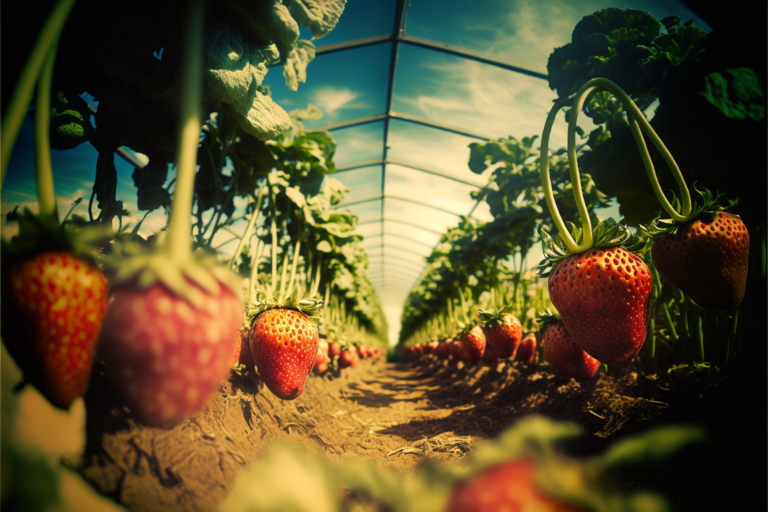As gardeners, we often wonder about the best practices for growing and maintaining our favorite fruits and vegetables. One fruit that’s popular among gardeners and food lovers alike is the strawberry. In this guide, we will discuss one of the most critical aspects of growing strawberries: how often to water them. We will cover various factors that influence their watering needs and provide a comprehensive, easy-to-follow guide for optimal strawberry growth. So let’s dive in!
Introduction to Strawberries
The Basics of Strawberry Plants
Before we can answer the question of how often to water strawberries, we need to understand the basics of strawberry plants. Strawberries are perennial plants that grow in USDA hardiness zones 3 to 10, making them suitable for a wide range of climates. There are three main types of strawberry plants: June-bearing, everbearing, and day-neutral.
June-bearing Strawberries
June-bearing strawberries produce a single, large crop in late spring or early summer, depending on the variety. They require a specific amount of daylight to initiate flowering and fruiting, which usually occurs in June.
Everbearing Strawberries
Everbearing strawberries produce two to three smaller crops throughout the growing season. They are less sensitive to day length and will produce fruit from spring to fall.
Day-neutral Strawberries
Day-neutral strawberries are the least sensitive to day length and will produce fruit continuously throughout the growing season, as long as the temperature remains between 35°F and 85°F.
Factors Affecting Strawberry Watering Needs
Soil Type
The type of soil in which your strawberries are planted plays a significant role in determining their watering needs. Strawberries prefer well-draining soil, such as sandy loam or loam. Clay soils can hold too much water, leading to root rot and other problems.
Weather and Climate
The weather and climate in your area will also impact how often to water strawberries. In hot and dry conditions, strawberries will need more frequent watering, while in cooler, wetter climates, they may require less.
Planting Method
Strawberries can be grown in-ground, in raised beds, or in containers. Each method has its own unique watering requirements, which we’ll discuss further in the following sections.
How Often to Water a Strawberry Plant?
How often to water a strawberry plant depends on various factors, such as soil type, weather, climate, and planting method. Generally, strawberry plants need 1 to 1.5 inches of water per week. This can be achieved by watering them once or twice a week, depending on the specific conditions of your growing area.
In hot and dry conditions, you may need to water your strawberry plants every other day to maintain consistent soil moisture. On the other hand, in cooler, wetter climates, they may require less frequent watering.

It’s essential to monitor the soil moisture regularly. To do this, stick your finger about 1 inch into the soil. If it feels dry, it’s time to water your strawberries.
Using a soaker hose or drip irrigation system can help ensure even watering and prevent water from sitting on the leaves, which can cause disease. If you’re growing strawberries in raised beds or containers, be aware that these methods typically require more frequent watering, as the soil tends to dry out faster.
In conclusion, how often to water a strawberry plant depends on the specific growing conditions and the individual needs of your plants. By monitoring the soil moisture and adjusting your watering schedule as needed, you can ensure your strawberry plants receive the proper amount of water to thrive and produce delicious fruits.
How Often to Water Strawberry Seeds?
When starting strawberry plants from seeds, maintaining proper moisture levels is crucial for successful germination and seedling growth. Here’s a guide on how often to water strawberry seeds:
Preparation: Before sowing the seeds, prepare a well-draining seed-starting mix that retains moisture without becoming waterlogged. Fill seed trays or small pots with the prepared mix.

Sowing the seeds: Sow the strawberry seeds on the surface of the soil, and then cover them lightly with a thin layer of seed-starting mix. This layer should be no more than 1/8 to 1/4 inch thick.
Initial watering: After sowing the seeds, water the soil gently to ensure it is evenly moist but not soggy. Using a spray bottle or a fine watering nozzle can help prevent displacing the seeds.
Maintaining moisture: During the germination process, it’s vital to keep the soil consistently moist but not waterlogged. Check the soil moisture daily by touching the surface with your finger. If it feels dry, mist the soil lightly with water. Depending on the humidity and temperature of your growing area, this may be necessary once or twice a day.
Germination and seedling care: Strawberry seeds typically germinate in 2 to 4 weeks. Once the seedlings emerge, continue monitoring the soil moisture and watering as needed. As the seedlings grow and their roots develop, you can gradually decrease the frequency of watering.
How Often to Water Strawberries
In-Ground Strawberries
- For in-ground strawberries, the general rule of thumb is to water them once or twice a week, providing 1 to 1.5 inches of water per week.
- During hot and dry periods, you may need to water them every other day to maintain consistent soil moisture.
- Use a soaker hose or drip irrigation system to ensure even watering and prevent water from sitting on the leaves, which can cause disease.
Raised Bed Strawberries
- Raised bed strawberries typically require more frequent watering than in-ground strawberries, as the soil tends to dry out faster.
- Check the soil moisture daily and water as needed to maintain consistent moisture.
- As with in-ground strawberries, use a soaker hose or drip irrigation system to water your raised bed strawberries.
Container Strawberries
- Container strawberries require the most frequent watering, as the limited soil volume dries out quickly.
- Check the soil moisture daily, and water as needed to maintain consistent moisture.
- Be sure to use a well-draining potting mix and containers with drainage holes to prevent waterlogging.
Conclusion
In conclusion, how often to water strawberries depends on various factors such as soil type, weather, climate, and planting method. By understanding these factors and following the guidelines provided in this article, you can ensure that your strawberry plants receive the proper amount of water to thrive and produce delicious, juicy fruits. Remember to monitor your plants regularly, adjust your watering schedule as needed, and use appropriate watering techniques to promote healthy growth and prevent disease.
FAQs
What is the best time of day to water strawberries?
The best time to water strawberries is in the early morning or late evening when the temperatures are cooler. This helps to reduce water evaporation and ensures that the plants can take up water more efficiently.
How can I tell if my strawberry plants need water?
Check the soil moisture by sticking your finger about 1 inch into the soil. If it feels dry, it's time to water your strawberries. Additionally, wilting leaves or yellowing foliage may also indicate that your plants need water.
Can I overwater my strawberries?
Yes, overwatering can lead to root rot and other diseases. To prevent this, make sure the soil is well-draining and water only when the soil feels dry to the touch.
Do strawberries need more water when they’re producing fruit?
Yes, strawberries have increased water needs during fruit production. Be sure to monitor the soil moisture more closely during this time and adjust your watering schedule accordingly.
Can I use mulch to help retain soil moisture for my strawberry plants?
Absolutely! Applying a layer of organic mulch, such as straw or shredded bark, around your strawberry plants can help retain soil moisture, reduce weed growth, and maintain a more consistent soil temperature.

